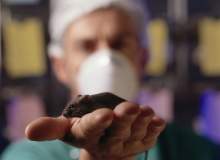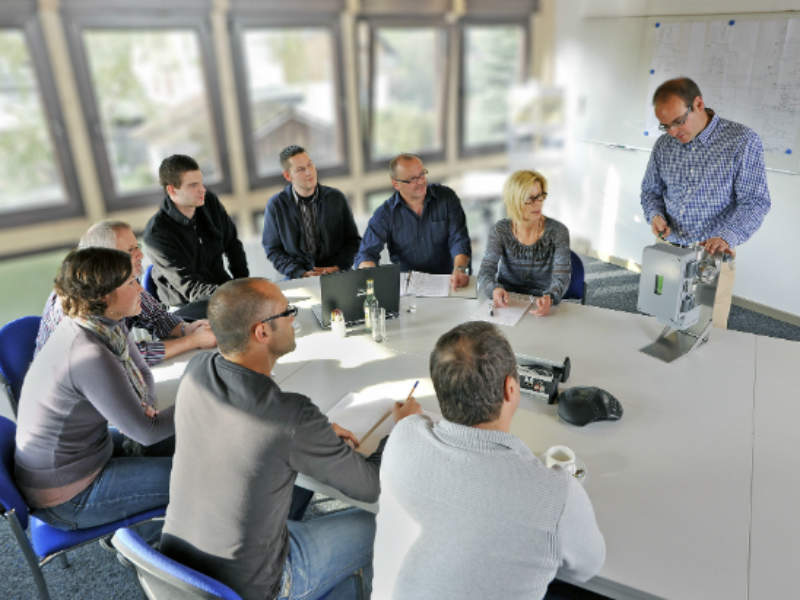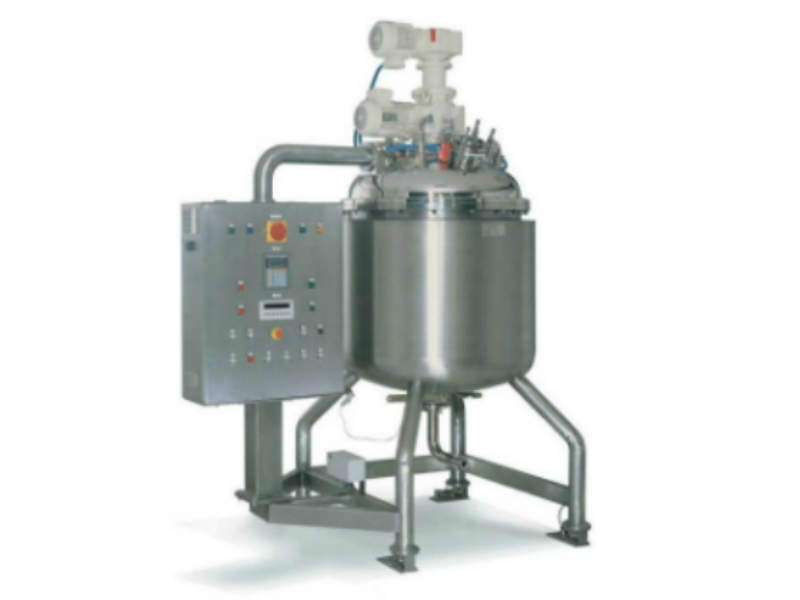Why We Need To Testing Animal For Making Drug First Before Human?


The contend about fauna research and testing has no shortage of emotion. The testing of cosmetics and other consumer products on animals is already banned in Europe and several other countries, and the practice is contested with a justifiable ferocity in the U.s.a. and other markets where it is still legal.
While the days of legal animate being testing for consumer research are hopefully numbered, in the medical context the picture is more than complex. Popular stance tends to exist more accepting of animal research on an ethical level when it is used as a means of improving medical, scientific or veterinary noesis. In the Britain, for instance, a 2014 survey found that 68% of respondents accustomed the exercise for medical enquiry if there were no other alternatives.
How vital is beast research?
However, across the ethical debate over the apply of animals for medical inquiry, just how scientifically useful is data from animals in the evolution of effective drugs for humans? The general consensus in the scientific community is that creature research has been a cornerstone of medical research for endless decades, and has played a vital role both as a means of pre-clinical safety and efficacy testing earlier starting human trials, and as a method of edifice the central noesis that feeds into new treatments and medical innovations.
"All just a handful of Nobel Prize winners for physiology and medicine have been brute researchers," says Chris Magee, head of policy and media at Understanding Brute Inquiry, a Uk-based advocacy group campaigning to build understanding and acceptance of animal testing in biomedical research. "As well as discovering things similar the role of insulin in diabetes using dogs, we've been able to develop and exam medicines for many conditions, elucidate biological mechanisms and base treatments on fauna physiology."
Critics from the anti-vivisection move, meanwhile, contend that data from animal models is of dubious value to human medicine and that more reliable, ethically-audio and man-focused alternatives are available.
"Genetically, biochemically and physiologically, animals are not humans," says Dr Jarrod Bailey, a geneticist and senior research scientist at anti-vivisection grouping Cruelty Costless International. "Mice aren't rats; cats aren't dogs, and monkeys aren't humans. Not only is at that place no robust, published evidence to support claims that animal testing of drugs is predictive of human responses – something baroque after and so many decades of the exercise – only there are several reports suggesting a poor predictive nature of animal tests for humans; that toxicity in animals is non a proficient predictor of toxicity in people."
The case confronting animal research
Bailey argues that the function of animal inquiry in the medical breakthroughs of previous decades has been overplayed by proponents of the practise.
"The past contribution of fauna inquiry to medicine is wildly exaggerated, and any sort of interest of animals in whatsoever area of inquiry, notwithstanding tenuous or even confounding, is translated to a necessary and helpful interest," Bailey says. "Many of these claims don't stand upwards to scrutiny: there are formidable arguments supporting the crucial and pivotal roles of non-beast approaches to salient medical breakthroughs throughout history, rather than of animal experiments. This includes painkillers, antibiotics, chemotherapy drugs, anaesthetics, AIDS drugs, and more – all of which are used by pro-fauna enquiry lobby groups to defend [animal testing]."
A major office played past animal enquiry is in the pre-clinical testing stage for new drugs, to gather data on the safety and efficacy of a treatment before human being subjects are exposed to its furnishings. But do the myriad genetic differences betwixt species make it impossible to dependably extrapolate data from animal testing into a human model?
"The animal testing paradigm, on which drug development is yet largely based, is failing."
Bailey says research conducted by himself and others has shown that inter-species genetic variability means that making meaningful inferences betwixt creature and human reactions is not viable; the genetic differences are but too high. He cites dozens of HIV/AIDS vaccines and hundreds of stroke treatments that have demonstrated efficacy in animal models – including monkeys and chimpanzees – but which take yielded no human HIV/AIDS vaccines and precious few stroke treatments to engagement.
"Even after relatively few years of written report, these differences are myriad and of smashing event," says Bailey. "Many of them impact immune office, which explains the failure of many disease models – and of course if understanding of a affliction is flawed, the search for effective treatment is going to be – and many affect the metabolism of drugs directly. So we don't merely know empirically that the paradigm is failing – we are beginning to understand why."
This variability has also raised questions about the usefulness of fauna testing to amend the safe of Phase I clinical trials in humans. At that place are well-known instances in which animal testing failed to predict sometimes mortiferous health risks for human patients, including clinical trials of monoclonal antibody TGN1412 at Northwick Park Hospital in London in 2006, during which the experimental drug caused catastrophic systemic organ failure in vi healthy participants, despite demonstrating safety and efficacy in a wide range of animals.
A statistic oftentimes used past opponents of biomedical creature inquiry is that, according to data from the U.s.a. Food and Drug Assistants (FDA), 92% of drugs that are successful in animal testing subsequently fail in human trials. Bailey notes that failure rates are getting worse and are indicative of the systemic weakness of animal testing.
"This tells us that the animal testing paradigm, on which drug development is however largely based, is declining," he says. "The scientific literature is replete with concerns over this, as well as calls to transition to more predictive and more than homo relevant approaches as a matter of urgency. These calls are getting more desperate as the manufacture struggles."
In defence force of animal research
Magee is quick to offering a rebuttal to the failure rate figures, noting that these statistics refer to all pre-clinical research, the majority of which, he says, isn't animal testing.
"The failure of a candidate compound to brand it all the way through pre-clinical testing and clinical trials is indeed this high, which isn't surprising at all and merely points to the fact that it's difficult to find a compound that can get a drug whatsoever method you're using," Magee says. "In fact, some 86% of compounds that pass a phase ane clinical trial in human being volunteers 'neglect' by stage three for reasons as diverse as efficacy and economic viability, none of which implicates the animal model."
The contribution of animal research to the safety of human trials, Magee adds, can be measured in the fact that agin events in clinical trials are the dramatic exception in an otherwise first-class record.
"The numbers rather speak for themselves in that sense," Magee notes. "In the United kingdom of great britain and northern ireland each twelvemonth there are around 600,000 people volunteering for clinical trials, yet there have been no fatalities and only one serious incident in over 30 years of phase ane clinical trials. This simply could not be the case if animal models weren't successfully screening out harmful compounds."
As for the TGN1412 incident at Northwick Park Hospital, Magee attributes the prophylactic failure to a lax trial approach, which treated volunteers with the varied doses of the drug at the aforementioned time, rather than staggering the treatments 1 at a fourth dimension.
"More than often, fauna enquiry provides the basic knowledge upon which treatments can be based."
When it comes to extrapolating efficacy data betwixt species, Magee acknowledges that this requires "more caution with regard to the species used and the target arrangement", and notes that "humanising" test subjects using genetic manipulation shows potential equally a means to reduce the problem of genetic variation while still having the do good of working within a living system, which is one of the disadvantages of some alternatives to animal testing.
While Magee staunchly defends the utility of animal research to improve clinical trials, he argues that the practice plays a larger role in the underlying scientific experimentation that can lead to important innovations.
"As useful as information technology is, toxicological testing of potential new drugs makes upward merely around fifteen% of animate being inquiry," he says. "More often, animal research provides the bones cognition upon which treatments can exist based and nosotros tin can trial experimental techniques similar new surgical approaches to babyhood eye weather condition or curing paralysis. In general we are interested in both the similarities and the differences between species. Breast cancer drug Herceptin is based on a mouse antibody for case, and nosotros've candidate treatments for Ebola which were developed in a similar way."
Scientific discoveries tin can be decades apart from the medical innovations they inform, as is the case with Sir John Gurdon'southward pioneering frog-cloning experiments in the 1960s, for which he developed the nuclear transfer techniques that have facilitated modern stem cell enquiry, including Gurdon and Shinya Yamanaka'southward Nobel Prize-winning discovery that mature cells tin can be reprogrammed to become pluripotent.
Encouraging the use of alternatives
One of the about important questions when because creature research and its usefulness in medicine is not whether it has made a positive bear on – which information technology conspicuously has done at many points, to some caste or another – but whether it is irreplaceable. In Europe, afterward all, it is illegal to acquit animal testing if an alternative is bachelor, although in that location is no such law in the United states and many other regions.
Naturally, Bailey argues that creature enquiry is eminently replaceable, and somewhat surprisingly, Magee generally concurs. Technologies such every bit stem prison cell platforms, 3D tissue and organ cultures, and estimator simulation are opening up new options both as complements to animal research and as potential replacements for it.
Bailey is particularly excited about the use of 3D tissue and organ cultures, "in which mini human organs made upward of different jail cell types all part individually too as together, and also 'body on a fleck' approaches that permit the study of several homo tissues/organs at once, with circulatory systems, metabolism, and so on. Would you rather take a drug for the starting time time that had been tested on rats and dogs, or that had been tested on a suite of alternatives that are human-relevant?"
"Nosotros are in the beginning of a golden age of alternatives."
Magee, meanwhile, notes that "we are in the showtime of a gilt age of alternatives, with many more condign available, and many parts of the pharmaceutical industry are busy assessing the value of various non-animal assays and approaches. Our organisation is increasingly focused on identifying and removing roadblocks to the creation and adoption of alternatives – if there are cheaper or amend models, there is no advantage to our members in using an fauna study."
This gradual process of reducing reliance on animate being models is supported by legislation such as Europe'south conclusion to outlaw fauna research when alternatives are available, and by organisations like the UK'south National Centre for the 3Rs (Replacement, Refinement and Reduction of Animals in Research), which Magee says "spends millions of pounds every twelvemonth funding research into alternative technologies".
Where Bailey and Magee'south views diverge is the speed at which the transition should be made. Bailey doesn't claim that alternatives aren't being used, rather that they are "not used nearly enough, and withal take a back seat to brute utilize". Cruelty Costless International, forth with other organisations, would back up an immediate ban on animal research, and believes that pharma companies and research organisations would be able to adapt to using alternative testing methods in the time information technology would take for a ban to come into force.
On peak of legislative alter and funding for alternatives, force per unit area applied by organisations similar Cruelty Free International represents an important means of helping to ensure that companies and laboratories don't but turn to animal testing as a default, and that alternatives are employed whenever they are viable. There may well come a time when technological advances plow animal research into a relic of the past, but the current all-time practice employed in Europe seems a sensible compromise until that time comes, and other regions would do well to follow conform.
"In many ways the animate being research 'debate' is a piffling artificial," says Magee. "It doesn't genuinely accept two sides because nobody is suggesting nosotros should always employ animals, whereas there are those who say we should never use animals. Instead, researchers are in the middle ground, proverb that only if an experiment has passed two tiers of ethical review is it upstanding. The 'debate' asks us 'animal enquiry: aye or no?', when we've only always said 'perhaps, if information technology's worthwhile, ethical and there's zip better available.'"
Source: https://www.pharmaceutical-technology.com/analysis/featureof-mice-and-men-debating-animal-research-in-drug-development-4938505/
Posted by: nolandrowend.blogspot.com




0 Response to "Why We Need To Testing Animal For Making Drug First Before Human?"
Post a Comment